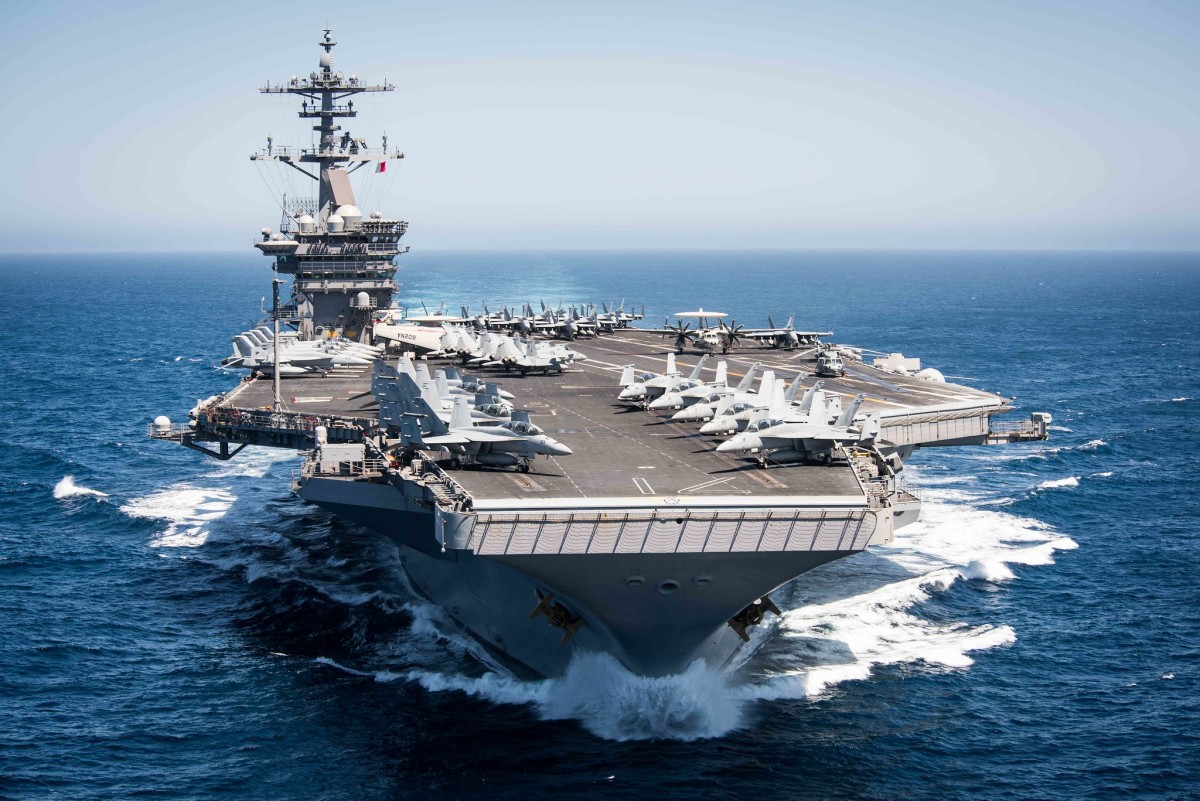

Chief of Naval Operations Adm. Mike Gilday has received the Navy’s latest investigation into the deadly novel coronavirus (COVID-19) outbreak aboard the aircraft carrier USS Theodore Roosevelt, said Gilday’s spokesman Cmdr. Nathan Christensen.
“It will take time for the investigation’s recommendations to be reviewed and endorsed by Adm. Gilday,” Christensen said in a brief statement.
As of Wednesday, there were no indications when the investigation’s findings would be publicly released.
The massive coronavirus outbreak aboard the Theodore Roosevelt prompted the ship to interrupt its deployment and pull into Guam on March 27. At least 1,102 sailors aboard the ship had tested positive for the disease by April 30. The Navy later stopped providing daily updates on the number of sick crew members.
One sailor from the Theodore Roosevelt died on April 13: Chief Petty Officer Charles Robert Thacker Jr., 41, who had been placed in intensive care after he was found unresponsive while in isolation.
Following the Navy’s preliminary inquiry into the coronavirus outbreak aboard the aircraft carrier, then-Acting Navy Secretary James McPherson announced on April 29 that he had ordered Gilday to conduct a command investigation into the matter because he still had “unanswered questions.”
McPherson did not say publicly what his concerns were, so Task & Purpose asked retired Adm. James Stavridis what questions he feels the command investigation needs to answer.
The investigation should lay out the “tick tock” of events, including exactly when and with whom Crozier raised his concerns about the coronavirus, said Stavridis, who served as NATO’s supreme allied commander from 2009 to 2013.
Other questions the investigation needs to address include what medical advice Crozier was receiving, why he chose an unclassified format for his memo; and how did he select the people in his chain of command to whom he sent the memo, said Stavridis, who is currently an operating executive at The Carlyle Group global investment firm.
To retired Cmdr. Kirk Lippold, who was commanding officer aboard the destroyer USS Cole during the Oct. 12, 2000 attack by al Qaeda, there is one over-arching question: “Where are the admirals?”
Lippold noted that Rear Adm. Stuart Baker, commander of Carrier Strike Group 9, was embarked on the Theodore Roosevelt when Crozier felt compelled to send his memo.
“Where was the one-star on the carrier?” Lippold told Task & Purpose. “Where was 7th Fleet? Where was [U.S. Pacific Fleet]?”
Defense Secretary Mark Esper told reporters on May 5 that his guidance to McPherson was the investigation should “follow the facts wherever they go.”
McPherson’s decision to order the investigation came after Army Gen. Mark Milley, chairman of the Joint Chiefs of Staff, recommended to Esper that the Navy provide more answers to top Pentagon leaders about the circumstances surrounding the coronavirus outbreak aboard the Theodore Roosevelt.
Navy leaders had recommended to Esper on April 24 that the aircraft carrier’s former commanding officer Capt. Brett Crozier be put back in command of the ship, but the command investigation has delayed any decision on whether to reinstate Crozier, who is currently assigned to San Diego.
On April 2, then-Acting Navy Secretary Thomas Modly fired Crozier after the San Francisco Chronicle published a leaked copy of a memo that he sent to his superiors warning that sailors would die unless the majority of the aircraft carrier’s crew were placed in individual quarantine ashore.
At a Pentagon news briefing, Modly told reporters that Crozier had been careless by his memo to “20 or 30 other people.” The Washington Post later revealed that Crozier’s March 30 memo had only gone to 11 commanders in U.S. Pacific Fleet.
Modly also said he was unconvinced by Crozier’s argument that up to 50 sailors aboard the ship could die of the coronavirus unless the majority of the crew were placed in individual quarantine ashore.
Then on April 7, Modly abruptly resigned for making a speech to the Theodore Roosevelt’s crew in which he insulted Crozier and chastised the sailors for cheering their former commanding officer as he left the ship.
The Theodore Roosevelt left Guam on May 21 and is currently underway. During the nearly two months that the aircraft carrier spent in Guam, nearly 4,000 of its crew members were moved ashore and placed in isolation. However, at least 13 sailors who had previously tested positive for the coronavirus were found to have the disease again after returning to the ship from isolation.